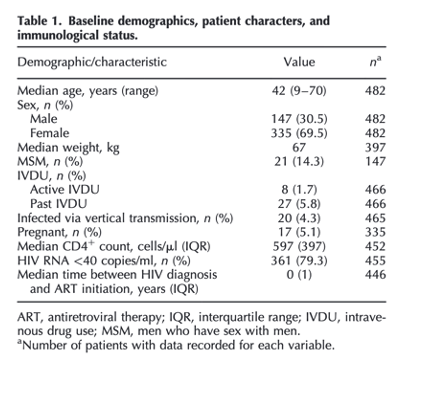| |
HIV-positive Ukrainian refugees in the Czech Republic
|
| |
| |
Download the PDF here
This study provides comprehensive recent data on the management of Ukrainian refugees with HIV who fled to the Czech Republic as a result of the war with Russia. This is an unprecedented situation in Europe, and these data have implications for healthcare management both in the Czech Republic and in other countries that have accepted large numbers of Ukrainian refugees. Overall, most refugees registering at Czech HIV clinics were female, had been receiving ART in Ukraine, and were completely virally suppressed. Although most patients were able to continue to receive the same treatment in the Czech Republic, those who switched treatment did so mainly owing to differences in drug availability rather than clinical need.
Staff and resources at HIV centers in the Czech Republic have been severely stretched by the influx of new patients. Physicians managing these patients must seek individual solutions for each patient, but owing to the difficulties in communication, it can be challenging to explain the indications for specialist consultation. When healthcare appointments are made, patients are sometimes rejected out of fear or a lack of knowledge about HIV by the non-HIV specialist medical community. This increases the burden of stigma on the patients and may result in missed diagnoses of other morbidities. Most patients do not undergo routine healthcare procedures/examinations (e.g. gynecology, urology, dermatology, surgery, diabetology, endocrinology, cardiology) owing to the burden on the capacity of the healthcare system. Additionally, owing to overburdened services and communication difficulties, mental health provision is often unavailable. Psychiatric consultations have not been possible for most refugees despite many presenting with anxiety disorders and post-traumatic stress.

Abstract
Objective:
Over 480 000 Ukrainian refugees have arrived in the Czech Republic since the Russian invasion of Ukraine in 2022, including over 500 people with HIV. This study describes the demographics, characteristics, and management of Ukrainian refugees with HIV in the Czech Republic.
Design:
Retrospective, observational, noninterventional study.
Methods:
Ukrainian nationals registering at HIV centers in the Czech Republic with war refugee status were included. Data were collected from medical records between 1 March and 31 July 2022. The study was registered with the Czech State Institute for Drug Control, ID number 2301200000.
Results:
Four hundred and eighty-two patients were included in the study. Most patients were female (69.5%; n = 335/482) with well-controlled HIV. The median [interquartile range] CD4+ cell count was 597 [397] cells/μl of blood, and 79.3% (n = 361/455) of patients had HIV RNA <40 copies/ml. Coinfections of hepatitis C virus, hepatitis B virus, and/or tuberculosis were reported for 17.4% (n = 78/449), 9% (n = 40/446) and 1.3% (n = 6/446) of patients, respectively. In Ukraine, 85.7% (n = 384/448) of patients had been receiving an integrase strand transfer inhibitor-based regimen and most (69.7%; n = 310/445) did not switch therapy upon arrival in the Czech Republic.
Conclusion:
Migration from Ukraine is changing the characteristics of HIV epidemiology in the Czech Republic. Ukrainian refugees with HIV have been provided with a high standard of medical care in the Czech Republic. Improved coordination between medical services within the Czech Republic and between countries in the European Union is necessary to optimize patient care.
|
|
| |
| |
|
|
|